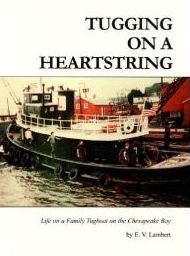EDIT; Thank you to Carolina Salguero of The Mary Whalen for the head’s up. The comment period has been extended to December 6th, 2016, the link for comments here. If you wish to comment, please do so in an effort to clarify the misconceptions of the opposition. We as an industry need to inform and educate our neighbors and help them understand the facts, and not embrace the hyperbole.
The Hudson River is a beautiful stretch of water. It reaches from the Battery to Troy Locks in a roughly 130 mile meander that is wide at her lower reaches and narrow and dark in the ”upper end”. The bridges that cross at various points offer vistas that will take your breath away. The fact that this river has been a conduit for commerce for a few hundred years should come as no surprise. It’s the perfect corridor, with limitations.
This post is in reference to the proposal for expanding the availability of anchorages along the river, including my effort to enlighten the less than well informed resistance the proposal has met. I will make an effort to mitigate the criticisms that were based on a lack of facts. It’s clear to me and many of my colleagues that the resistance came with a flood of ignorance and supposition. Those who are screaming the loudest are using arguments that clearly demonstrate how little they understand the marine industry, basic safety requirements, and the necessity of these refuges.
NIMBY at its worst.
So in an effort to fill in some blanks and erase some misconceptions I would offer this post as a start. This is by no means a comprehensive list of concerns, but I sense these are the primary discussions.
As it has in the past, today’s waterborne commerce moves all manner of cargo to and from the ports of call along her banks. The old brick works, mills, scrap yards, boat landings, and wharves are evidence of commerce past. Today, this tradition continues on a much larger scale.
In case you didn’t already know;
When I first started working on tugs we had a regular run up to Albany and Rensselaer, with stops in Poughkeepsie, Newburg, Peekskill, Tarrytown, and a half dozen little holes in the wall like Kingston’s Roundout Creek and further up in Athens. I learned my way up and down the river by sitting for hours on end watching listening and learning from the Old Man, he just so happened to be my father. An education like this, you can’t buy.
Those who seek to ply this waterway must prove their skill and local knowledge before they are qualified to make a transit. Piloting the river takes practice and a multitude of trips to get a clear working knowledge of the bends and turns and shallows along the way. It takes a good long while before any mate gets to stand the “upper end watch” without an experienced eye pointing the way and teaching him what he needs to know, but more about that later.
Fact; All foreign flag vessels carry a pilot that boards in Yonkers and directs the transit to the Port of Albany. The reverse is also true, from Albany to Yonkers. The bulk of commerce though (you may have guessed it), is tugboats and barges. I’d like to add, if you don’t have recency on the river, you take/hire someone who does.
Like any waterway there are anchorages, designated areas to stop and wait for traffic, berths, or just rest. The anchorages for deep draft vessels are extremely limited and get crowded rather quickly if weather turns ugly or backups at the port of Albany deny berthing for a spell. The widest and deepest ones being south of Kingston, N.Y.
NOT A FACT; These new anchorages will be used for fleets of barges storing oil long term waiting for the price to improve;
The new proposed anchorages are not going to be long term storage for crude. The new anchorages are not wide enough nor are they fit to accommodate the scale of storage to be a moneymaker. The concept of storing oil in ships is not new, and yes it happens but not on the scale these anchorages could accommodate. The ships that are utilized for this kind of storage are in the 2 million barrel range, they anchor offshore in very deep water with lots of room. The practice is referred to as “contango”, and it’s costly. Look it up.
The efforts of the River Keeper’s site and others like it denouncing any accommodation and the USCG’s comment section reflect a dearth of industry knowledge from regular folks fearing the worst without knowing the facts.
Citing the dangers of pollution (noise, light, and cargo) and resisting more anchorages is indeed disingenuous when those anchorages are being proposed to make it safer for vessels to run the river and stop when necessary. It seems to me that trains running up and down each side of the river many times a day, contribute more noise and exhaust to the general population than what a few aeries of wealth must endure as we pass along the banks of the river. But I digress.
The marine trade is the easy target, we’re noisy smelly boats that scar the vistas and cast a specter of foreboding on the pristine Hudson Valley. Except for the fact that the marine industry is the reason you can rely on finding gas stations, airports and fuel deliveries stocked for use by the general public. It’s why Walmart has those items you seek at a bargain and why your produce shelves are filled with exotic things like bananas in winter.
The industry isn’t being recognized for its expertise and safety record, it’s being denigrated by those who find it a convenient scapegoat. Attacking the trade on the river is easy, most of the benefits derived are invisible at first glance.
It is also unreasonable to expect the river to cease being a critical artery serving the Northeast market.
These anchorages have been represented as a threat and that they will be full of vessels scarring the bottom and putting the river at a greater risk. Again, anchorages constantly being filled to capacity, especially some of these smaller ones, is unlikely except for an event involving safe haven needs in the case of a hurricane. During hurricane Sandy, the ATB unit I work on was anchored off Port Ewen for the duration of the storm along with a couple of other units. Should we have been forced to go to sea?
Fact, the risk of a spill is unacceptable;
We feel the same way. And we’re under a lot of scrutiny to make sure it doesn’t happen. The oil transporters are vetted to a degree that most people never imagined. The responsibility for cleanup falls directly on the owners of the cargo.
Transporters working for oil charterers are subject to what’s known as ship inspection reporting (S.I.R.E.) .
A group known as O.C.I.M.F. created a checklist of inspection points that transporters must submit to that covers everything. See the form here. Rather comprehensive I’d say.
NOT A FACT The boats are old and poorly maintained;
Yeah,no.
Every boat is subject to regular maintenance and scheduled dry dockings to ensure their seaworthiness and operational reliability. Yes some of the tugs are over 25 years old, and their upkeep is a large part of their operating cost, second only to insurance coverage. Engine hours (hours of use) are tracked and specific replacement regimens are required to keep the boat operating in top form and fuel efficiency. Filters, bearings, seals all have a lifespan and are changed out based on their expected service life. Maintenance is a constant. A long awaited “inspection requirement” has finally been implemented. It’s known as Subchapter “M”, follow this link to see what the rule has set in place.
The rule that all vessels carrying petroleum must be double hulled was dictated by OPA 90, legislation directly following the Exxon Valdez grounding and spill in Prince William Sound in 1989. Every barge moving oil on the inland waters of the United States is to be double hulled, every single one. In the event of grounding the outer hull protects the inner hull and has proven its ability time and again to mitigate a cargo spill.
Rules for drug and alcohol testing, physicals, re-certification, formal radar training, all followed over the years. Like so many safety regulations, they came on the heels of a major incident and investigation. The marine industry currently has more stringent training standards than most industries except for the airline industry.
Today’s mariner is safer, better equipped and more skilled than ever before.
Now for the bit about “recency” and what it means.
When someone operates in the same geographic area for a length of time, it becomes familiar. The same way you know your way to and from work each day. Whether you walk, drive, ride a train or take a bike you know the route “like the back of your hand”.
For transits on the river, tug mates train to know and remember each turn and landmark along the way. They are keenly aware of tidal current and levels, the amount of water under the keel. They learn where to slow down to minimize bottom suction, bank suction, bank cushion and any number of physical effects the vessel might encounter. And one of the most important things is where to stop if things get crazy. If the visibility diminishes, if the wind is getting a little too strong, or if there is a mechanical issue that will impede the boat’s ability to continue safely the primary answer to this is an anchorage. And right now, adding more will promote safe navigation rather than make it more dangerous to the river’s ecology.
It has become customary to avoid night transits in the “upper end” for more than a few years now. It was ushered in at first for winter transits with deep draft barges when ice would overrun and drag channel markers to hell and gone. Anyone who has spent any time running the river in icy conditions knows this situation well. This is another good reason to know the route like the “back of your hand”.
It is now policy for most of the big transporters. Insurance underwriters and charterers had a lot to do with insisting on daylight-only becoming a year-round practice. This is the primary reason Kingston sees vessels anchored up off Port Ewen. Deep draft and darkness don’t mix these days.
My case for the anchorages;
Denying additional anchorages is tantamount to closing the shoulder on the thruway, it’s the same as denying an aircraft an emergency landing field. And in fact makes things worse instead of better, forcing a vessel that is blinded by a weather event, or hobbled with a mechanical difficulty to continue its voyage is madness.
The frequent complaints I’m reading concern shale oil and the hazard it presents to the river. The safety record of transits made by commercial vessels on the river is unmatched by any other mode of surface transportation.
The vessels carrying this product and many others, are manned by professionals with decades of experience moving cargo up and down the river in vessels with crews that have met the strictest vetting standards to date. It’s too easy to lose sight of the fact that gasoline, jet fuel, heating oil, and household goods all move on the river. Presently the shale oil market is slow, but the thirst for heating oil and gasoline, and jet fuel continues unabated. If the Riverkeepers and their supporters are really serious about safety I recommend learning more about the industry you seek to encumber and try talking to us rather than promoting a stance based on limited knowledge.
The new proposed anchorages are necessary avoid a catastrophe, not create one. The industry issues regarding trade and global markets are not my concern here. I am concerned with offering some background and information on how inaccurately my job and expertise is being portrayed.
As far as the USCG is concerned they will render a decision based in some part on the comments received and the safety of vessels moving cargo on the river. I’m happy to see the comment period has been extended.
I look forward to reading the final decisions and what the Coast Guard will decide. You can be sure everyone isn’t going to be happy, but in my experience the decisions are well reasoned and consider all valid concerns.
Read Full Post »




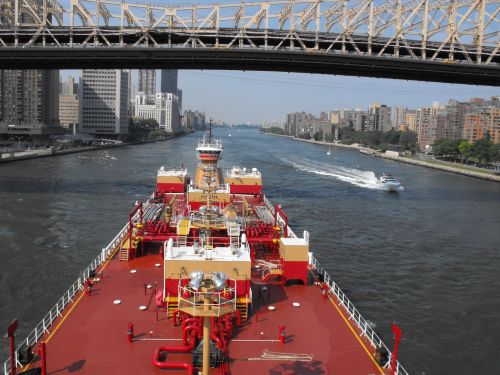
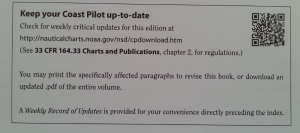
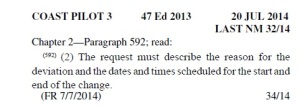
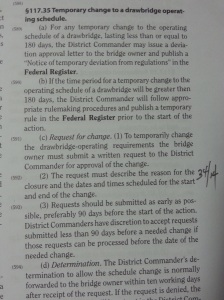
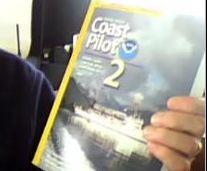
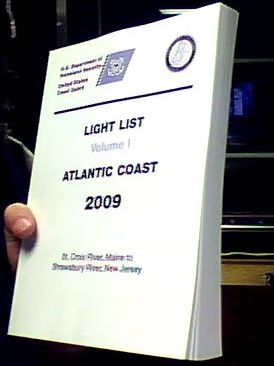
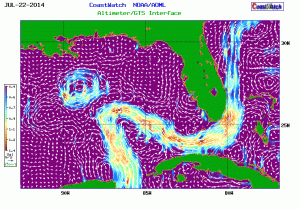


 15 degrees into the current in order to make good my charted course and struggling to make any real speed. Sliding across the Gulf is the rule.
15 degrees into the current in order to make good my charted course and struggling to make any real speed. Sliding across the Gulf is the rule.



